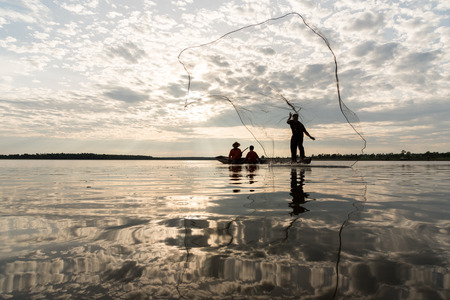1. Introduction to Native American-Led Fishing Tours
Across the United States, a unique kind of fishing adventure is gaining popularity—Native American-led fishing tours. These experiences go far beyond just catching fish; they offer a rich blend of sport, culture, and nature. Guided by members of Indigenous communities, these tours give anglers an opportunity to learn about traditional fishing methods, tribal history, and the deep spiritual connection Native peoples have with water and wildlife.
Unlike conventional fishing charters, these tours often take place on tribal lands or waterways that are deeply rooted in Native heritage. The guides are not only expert anglers but also cultural ambassadors who share stories, customs, and conservation practices passed down through generations.
One of the main appeals of these tours is how they combine recreational fishing with environmental stewardship. Many tribes focus on sustainable practices that protect fish populations and preserve ecosystems for future generations. As interest in eco-friendly tourism grows, more people are turning to Indigenous-led adventures for authentic and responsible outdoor experiences.
Why Choose a Native American-Led Fishing Tour?
| Feature | Description |
|---|---|
| Cultural Insight | Learn traditional fishing techniques and tribal stories connected to local waterways. |
| Sustainability | Experience environmentally friendly practices rooted in generations of Indigenous knowledge. |
| Unique Locations | Access to tribal lands and lesser-known fishing spots rich in natural beauty. |
| Expert Guidance | Fish alongside experienced Native guides who know the waters intimately. |
These tours are especially popular among travelers seeking more than just a trophy catch—theyre looking for meaningful interactions with nature and culture. Whether youre an experienced angler or new to the sport, Native American-led fishing tours offer a refreshing way to connect with both the outdoors and America’s first peoples.
2. Cultural Insights Through Fishing
Fishing is more than just a way to catch food for many Native American tribes—its deeply rooted in their traditions, spirituality, and way of life. When you join a Native American-led fishing tour, youre not only learning how to cast a line or reel in a fish; youre stepping into a living story that has been passed down through generations.
Traditional Fishing Techniques
Many tribes continue to use traditional fishing methods that have been practiced for centuries. These techniques are often taught during tours, offering visitors a hands-on opportunity to experience history in action. Here are some common traditional methods still used today:
| Technique | Description | Tribes Known For This Method |
|---|---|---|
| Spearfishing | Using handmade spears to catch fish in rivers and shallow waters. | Ojibwe, Salish, Nez Perce |
| Fish Weirs | Building barriers in rivers to direct fish into traps. | Yurok, Chinook, Wampanoag |
| Nets and Baskets | Woven by hand using natural materials like reeds and bark. | Diné (Navajo), Cherokee, Hopi |
Storytelling and Oral Traditions
Each fishing trip becomes an opportunity to hear stories that explain the origins of fishing practices or honor legendary fishermen from tribal folklore. These tales arent just entertainment—they carry moral lessons, historical knowledge, and spiritual values. Your guide might share stories passed down from elders while sitting by the water or around a campfire after a day on the river.
A Spiritual Connection to Nature
For many Native communities, fishing is also a sacred act. It involves rituals and ceremonies that show respect to the water and the creatures within it. Some tribes offer prayers before casting lines or give thanks after catching fish as a way of honoring natures gifts. These spiritual practices reflect a deep belief that humans are part of the natural world—not separate from it.
Common Spiritual Practices Related to Fishing:
- Ceremonial Songs: Sung before or after fishing to express gratitude.
- Tobacco Offerings: Placed in the water as a sign of respect.
- Blessing Rituals: Performed to ensure safe journeys and successful catches.
By participating in these guided experiences, you gain more than fishing skills—you gain insight into how Indigenous peoples live in harmony with their environment. Its an unforgettable journey that connects sport with culture in meaningful ways.

3. Types of Fishing Experiences Offered
Native American-led fishing tours offer a wide variety of fishing experiences that blend cultural heritage with the thrill of the sport. Whether youre a seasoned angler or just starting out, these tours provide something for everyone. From peaceful fly fishing in pristine mountain streams to exciting salmon runs in historic tribal waters, youll find unforgettable opportunities to connect with nature and Native traditions.
Fly Fishing in Mountain Streams
For those who love serenity and scenic beauty, fly fishing in high-altitude streams is a perfect choice. Many tribes guide guests through clear waters surrounded by forested mountains. These trips often include lessons on traditional Native fishing techniques and how they tie into the tribe’s relationship with nature.
Salmon Fishing in Tribal Waters
Experience the excitement of salmon fishing in rivers that have been vital to Native communities for generations. These tours not only focus on catching fish but also share the historical and spiritual significance of salmon to the tribe. Guests often get to witness ancient fishing practices passed down through centuries.
Lakeside and Riverbank Angling
If you prefer more relaxed fishing, many Native-led tours offer lakeside or riverbank options where you can cast a line and soak in the natural surroundings. These trips are ideal for families or beginners looking for a laid-back experience with expert guidance.
Ice Fishing (Seasonal)
In colder regions, some tribes offer ice fishing adventures during winter months. This unique experience combines traditional knowledge with modern equipment, giving guests a safe and fascinating way to enjoy fishing even when lakes are frozen over.
Fishing Experience Options at a Glance
| Type of Fishing | Location | Skill Level | Cultural Element |
|---|---|---|---|
| Fly Fishing | Mountain Streams | Beginner to Advanced | Traditional techniques, nature connection |
| Salmon Fishing | Historic Tribal Rivers | Intermediate to Advanced | Spiritual and historical significance |
| Lakeside/Riverbank Angling | Lakes & Lowland Rivers | Beginner Friendly | Cultural storytelling, community practices |
| Ice Fishing (Winter Only) | Northern Frozen Lakes | All Levels (with guide) | Winter survival skills, seasonal traditions |
No matter which option you choose, Native American-led fishing tours are about more than just catching fish—theyre about connecting with land, water, and stories that go back thousands of years.
4. Conservation and Sustainability Values
One of the most powerful aspects of Native American-led fishing tours is their deep commitment to environmental stewardship. These tours are more than just sport or cultural experiences—they reflect a longstanding relationship with nature that emphasizes balance, respect, and responsibility.
Rooted in Generations of Wisdom
For many Native American communities, caring for the land and water isnt a trend—its a tradition passed down through generations. Fishing practices are guided by the belief that humans are part of nature, not separate from it. This means taking only what is needed, avoiding waste, and respecting aquatic life.
Eco-Friendly Fishing Practices
These tours often use techniques designed to minimize impact on the environment. Heres a quick look at some common sustainable methods used:
| Practice | Description |
|---|---|
| Catch-and-Release | Fish are carefully returned to the water after being caught, helping maintain fish populations. |
| Barbless Hooks | Used to reduce injury to fish during catch-and-release activities. |
| Selective Fishing | Only targeting abundant species to avoid overfishing vulnerable ones. |
| Traditional Nets and Tools | Handmade and eco-friendly gear based on ancestral techniques. |
Respecting Aquatic Ecosystems
Native American guides often take time during tours to educate guests about local wildlife, native plants, and the importance of clean waterways. Visitors learn how small actions—like picking up trash or avoiding harmful sunscreens—can protect fragile habitats.
The Cultural Value of Waterways
In many tribes, rivers, lakes, and oceans hold spiritual significance. These waters are seen as living relatives rather than resources. That belief shapes every aspect of how fishing is approached—with gratitude, care, and purpose.
A Shared Responsibility
When you join a Native American-led fishing tour, youre not just learning how to fish—you’re invited into a way of thinking that honors nature. It’s an experience that encourages all of us to become better stewards of the environment.
5. How to Book and What to Expect
Booking a Native American-led fishing tour is not only about planning a fun outdoor adventure—its also about respecting and engaging with the culture of the Indigenous communities who host these experiences. Here’s how you can prepare and what you should know before your trip.
Finding a Reputable Tour
Look for tours that are operated directly by Native American tribes or individuals. These tours often emphasize both sport and cultural education, offering a more authentic experience. You can find listings through tribal tourism websites, local visitor centers, or platforms like:
- NativeAmerica.travel – A great resource for Indigenous-owned tourism businesses.
- State or Tribal Tourism Offices – Many tribes have their own tourism boards with approved vendor lists.
- Online reviews – Check Google Reviews or TripAdvisor to see feedback from past guests.
What to Expect on the Trip
These tours usually combine guided fishing with storytelling, cultural teachings, and traditional practices. Depending on the tribe and region, you might learn about ancestral fishing methods, hear local legends, or even enjoy a meal prepared in a traditional way.
Typical Inclusions:
| Included | Details |
|---|---|
| Fishing Guide | Knowledgeable guide from the Native community |
| Gear Rental | Rod, reel, bait (check in advance) |
| Cultural Components | Stories, songs, or demonstrations unique to the tribe |
Preparing for Your Adventure
Before you go, make sure youre ready for the day—mentally and physically. Fishing trips can start early and involve several hours outdoors.
Packing Checklist:
- Sunscreen and insect repellent
- Weather-appropriate clothing (layers are best)
- A reusable water bottle
- Your own snacks or lunch if not provided
- A valid fishing license if required (check with your guide)
Understanding Cultural Etiquette
This isn’t just a fishing trip—it’s also a chance to learn and connect. Show respect by listening attentively when guides share stories or traditions. Always ask before taking photos, especially during cultural moments or ceremonies. Remember that each tribe has its own customs; what’s appropriate in one area may not be in another.
Pro Tips:
- Be on time: Tours often follow strict schedules tied to tides or daylight.
- No alcohol or drugs: Many tribal lands prohibit these substances.
- Tipping: While not required, it’s appreciated if you enjoyed your experience.
With some preparation and an open mind, joining a Native American-led fishing tour can be one of the most meaningful and memorable outdoor adventures youll ever have in the U.S.

